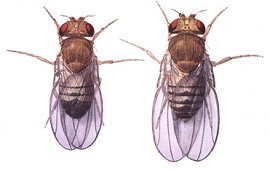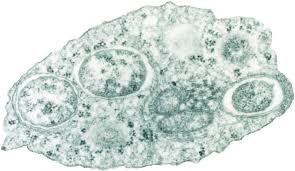It’s a murder mystery of massive proportion, albeit on a miniature scale: Male-killing among several species of insects, caused by selfish symbiotic bacteria.
Swiss researchers believe they have finally solved a question that has stumped scientists for decades, with potential implications for pest and infection control.

In a recent Nature publication, Toshiyuki Harumoto and Bruno Lemaitre of the Global Health Institute at the École Polytechnique Fédérale de Lausanne (EPFL) in Lausanne, Switzerland, have reported their findings regarding a toxin in Spiroplasma poulsonii, one of several types of symbiotic bacteria that manipulate host reproduction to spread in a population by distorting host sex ratios.
A notable feature of S. poulsonii is male killing in Drosphila, whereby the sons of infected female hosts are selectively killed during development. Male killing has also independently evolved in at least six bacterial taxa, including Wolbachia, which is being investigated by the Gates Foundation as a potential tool to control the transmission of mosquito-borne viruses such as dengue, chikungunya and Zika.
Although male killing in Drosophila caused by S. poulsonii has been studied since the 1950s, its underlying mechanism was not known. Previous studies attributed the selective killing of male progeny to an unknown substance called ‘androcidin’, assumed to be secreted by the bacterium. Further identification of the toxin was hampered by a lack of practical methods to characterize it, but SMRT Sequencing and a chance discovery enabled the Swiss team to pinpoint the protein responsible.
“Our study has uncovered a bacterial protein that affects host cellular machinery in a sex-specific way, which is likely to be the long-searched-for factor responsible for S. poulsonii-induced male killing,” the authors write.
While studying S. poulsonii, the researchers unexpectedly identified a mutant strain that showed reduced male-killing ability (MSRO-SE; the partial male-killing strain), where almost half of the male progeny survived. To identify the genetic basis of this reduced male killing, they sequenced the genome of MSRO-SE and compared it with that of an androcide competent strain, MSRO-H99.
They found a candidate gene that was altered in the compromised strain — encoding a 1,065-amino-acid protein with ankyrin repeats and an OTU (ovarian tumor deubiquitinase) domain — that they named Spaid (S. poulsonii androcidin)
“Overexpression of Spaid in D. melanogaster kills males but not females, and induces massive apoptosis and neural defects, recapitulating the pathology observed in S. poulsonii-infected male embryos,” the authors write. Their data suggests that Spaid targets the dosage compensation machinery on the male X chromosome to mediate its effects, the paper states.

The identification of Spaid in S. poulsonii could also boost the study of androcidins in other symbiont bacteria, including Wolbachia, which has been notoriously difficult to sequence. Wolbachia contains ankyrin-repeat proteins like Spaid, but in much higher frequency than S. poulsonii. Wolbachia genomes encode more than 20 ankyrin-repeat proteins, whereas Spaid is the sole ankyrin-repeat protein in the S. poulsonii genome. While fully investigating all the ankyrin-repeat proteins in Wolbachia would be an ambitious project, the findings from S. poulsonii suggest it might be a fruitful place to search for androcidin activity.
“A thorough understanding of the reproductive manipulations induced by symbionts would not only provide novel insights into fundamental aspects of development, sex determination, and their evolution in insects, but could also provide clues to control insect populations,” the authors conclude.
October 22, 2018 | Microbial sequencing methods